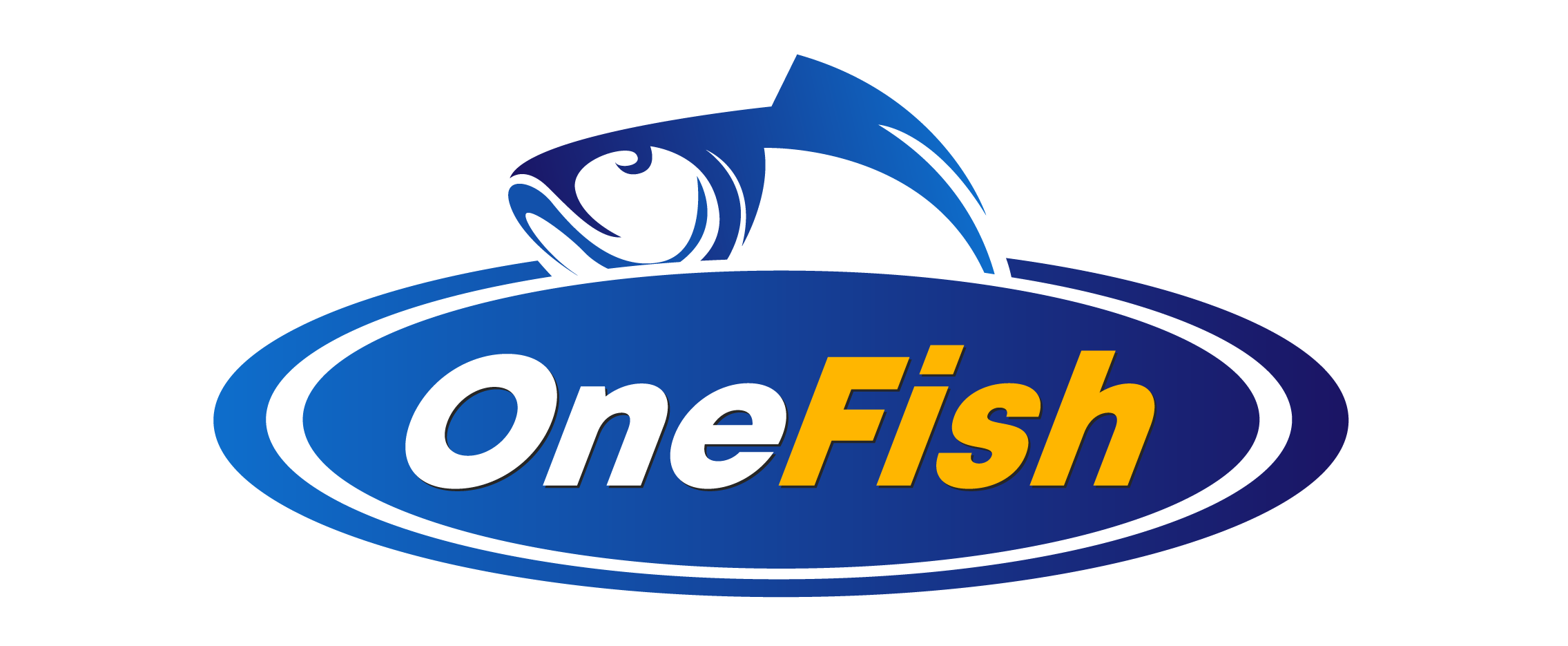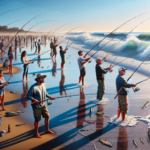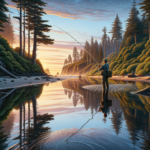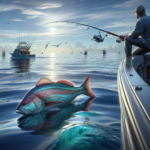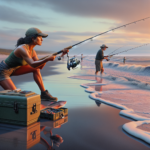Jigging for Walleye in the Great Lakes
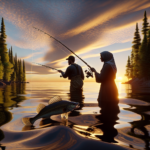
Introduction
Did you know that the Great Lakes hold over 20% of the world’s fresh surface water and are home to some of the best walleye fishing spots in North America? Whether you’re a seasoned angler or a novice looking to catch your first walleye, jigging in the Great Lakes offers an unparalleled experience. This article will delve into the techniques, species information, top fishing spots, and essential gear for jigging walleye in these vast waters. We’ll also cover seasonal considerations, safety tips, and conservation practices to ensure a successful and responsible fishing trip.
Background/Context
Historical or Cultural Significance
Walleye fishing has a rich history in the Great Lakes region, dating back to indigenous communities who relied on these fish for sustenance. Over the years, walleye have become a prized catch for sport fishermen due to their elusive nature and the challenge they present. The Great Lakes, comprising Lakes Superior, Michigan, Huron, Erie, and Ontario, have long been celebrated for their abundant walleye populations, making them a top destination for anglers worldwide.
Geographical Overview
The Great Lakes span over 94,000 square miles and touch eight U.S. states and the Canadian province of Ontario. The region’s climate varies from harsh winters to warm summers, creating diverse fishing conditions throughout the year. The lakes’ ecosystems are rich and varied, supporting a wide range of fish species, including the highly sought-after walleye.
Key Points/Details
Fishing Techniques
Technique Overview
Jigging is a popular technique for catching walleye, involving the use of a weighted lure that is moved up and down to mimic the movement of prey. This method is particularly effective in the Great Lakes due to the varying depths and structures where walleye are often found.
When and Where to Use
Jigging is most effective during the spring and fall when walleye are more active and feeding aggressively. Key locations include rocky points, drop-offs, and weed edges. Lake Erie, in particular, is renowned for its walleye population, especially around the Western Basin.
Recommended Gear
- Rods: Medium to medium-heavy action rods, around 6-7 feet in length.
- Reels: Spinning reels with a smooth drag system.
- Lines: Braided line (10-15 lb test) with a fluorocarbon leader (8-12 lb test).
- Lures: Jigs in various weights (1/8 to 1/2 oz) and colors, tipped with live bait or soft plastics.
Species Information
Species Overview
Walleye (Sander vitreus) are known for their olive and gold coloring, large, glassy eyes, and sharp teeth. They prefer cooler, deeper waters and are most active during low-light conditions such as dawn, dusk, and overcast days.
Best Practices
To successfully catch walleye, focus on areas with structure such as reefs, humps, and submerged vegetation. Use a slow, methodical jigging motion to entice bites. Live bait like minnows or nightcrawlers can be particularly effective when tipped on a jig.
Location Information
Top Fishing Spots
- Lake Erie: Known for its abundant walleye population, particularly in the Western Basin near the islands and reefs.
- Lake Huron: The Saginaw Bay area is a hotspot for walleye, especially during the spring and early summer.
- Lake Michigan: Green Bay offers excellent walleye fishing, with numerous access points and amenities.
- Lake Ontario: The Bay of Quinte is famous for its trophy-sized walleye, particularly in the fall.
Regulations and Licenses
Fishing regulations vary by state and province, so it’s essential to check local guidelines before heading out. Most areas require a fishing license, and there may be specific catch limits and seasonal restrictions to follow. For example, in Ontario, anglers need an Ontario Fishing License, and there are specific regulations for each lake.
Seasonal Considerations
Seasonal Variations
Walleye behavior changes with the seasons. In spring, they move to shallow waters to spawn, making them easier to catch. Summer sees them retreating to deeper, cooler waters, while fall brings them back to shallower areas to feed before winter. Winter ice fishing for walleye is also popular, particularly on Lake Erie.
Best Times to Fish
The optimal times for walleye fishing are during the spring and fall. Early morning and late evening are the best times of day, as walleye are more active during low-light conditions.
Events and Tournaments
Event Overview
The Great Lakes host numerous fishing tournaments throughout the year, attracting anglers from all over. Notable events include the Lake Erie Walleye Trail (LEWT) and the Saginaw Bay Walleye Club tournaments.
Preparation Tips
To prepare for a tournament, ensure your gear is in top condition, practice your jigging techniques, and familiarize yourself with the tournament rules and the specific fishing area. Pre-fishing the area can give you a significant advantage.
Tips and Best Practices
General Tips
- Use a fish finder to locate schools of walleye and underwater structures.
- Experiment with different jigging motions and speeds to find what works best.
- Pay attention to weather conditions, as walleye are more active during overcast days.
Avoid Common Mistakes
- Using the wrong gear: Ensure your rod, reel, and line are suitable for walleye fishing.
- Fishing at the wrong time: Focus on early morning and late evening when walleye are most active.
- Ignoring local regulations: Always check and follow local fishing regulations to avoid fines and contribute to conservation efforts.
Advanced Techniques
- Vertical Jigging: Effective in deeper waters, this technique involves dropping the jig straight down and lifting it vertically.
- Blade Baits: These lures create vibrations that attract walleye, especially in colder water.
- Slip Bobber Rigging: Useful for presenting live bait at a specific depth, particularly in weedy areas.
Gear and Equipment Recommendations
Essential Gear
- Medium to medium-heavy action rod (6-7 feet)
- Spinning reel with a smooth drag system
- Braided line (10-15 lb test) with a fluorocarbon leader (8-12 lb test)
- Jigs in various weights (1/8 to 1/2 oz) and colors
- Live bait (minnows, nightcrawlers) or soft plastics
Optional Gear/Upgrades
- Fish finder to locate schools of walleye and underwater structures
- GPS for marking productive fishing spots
- Portable aerator for keeping live bait fresh
Where to Buy or Rent
Local bait and tackle shops around the Great Lakes offer a wide range of gear and equipment. Online stores like Bass Pro Shops and Cabela’s also provide extensive selections. For rentals, check with local marinas and fishing outfitters.
Safety and Conservation
Safety Tips
- Always wear a life jacket when on the water.
- Check weather forecasts before heading out and be prepared for sudden changes.
- Inform someone of your fishing plans and expected return time.
- Carry a first aid kit and know basic first aid procedures.
Conservation Practices
- Practice catch and release to help maintain walleye populations.
- Follow local fishing regulations and catch limits.
- Respect the environment by not littering and properly disposing of fishing line and other waste.
Planning Your Trip
Accommodations
There are numerous lodging options around the Great Lakes, ranging from campgrounds and cabins to hotels and resorts. Popular areas like Lake Erie’s Western Basin and Green Bay on Lake Michigan offer a variety of accommodations to suit different budgets and preferences.
Travel Tips
Plan your route in advance and consider the best access points for your chosen fishing spots. Many areas around the Great Lakes are accessible by car, and some remote locations may require a boat. Check for any travel advisories or road conditions before you go.
Additional Activities
The Great Lakes region offers a wealth of activities beyond fishing. Explore local hiking trails, visit historical sites, or enjoy water sports like kayaking and paddleboarding. Many areas also have vibrant local communities with restaurants, shops, and cultural attractions.
Frequently Asked Questions (FAQs)
What is the best time of year to fish for walleye in the Great Lakes?
The best times are during the spring and fall when walleye are more active and feeding aggressively. Early morning and late evening are the optimal times of day.
What type of bait is most effective for walleye?
Live bait such as minnows and nightcrawlers are highly effective. Soft plastics and jigs also work well, especially when tipped with live bait.
Do I need a fishing license to fish in the Great Lakes?
Yes, a fishing license is required. Regulations vary by state and province, so check local guidelines before heading out.
What safety precautions should I take when fishing in the Great Lakes?
Always wear a life jacket, check weather forecasts, inform someone of your plans, and carry a first aid kit. Be prepared for sudden weather changes and know basic first aid procedures.
Conclusion
Jigging for walleye in the Great Lakes offers an exciting and rewarding experience for anglers of all skill levels. By understanding the best techniques, gear, and locations, you can increase your chances of a successful catch. Remember to follow local regulations, practice conservation, and prioritize safety to ensure a responsible and enjoyable fishing trip. Whether you’re targeting trophy-sized walleye in the Bay of Quinte or exploring the abundant waters of Lake Erie, the Great Lakes provide endless opportunities for memorable fishing adventures.
